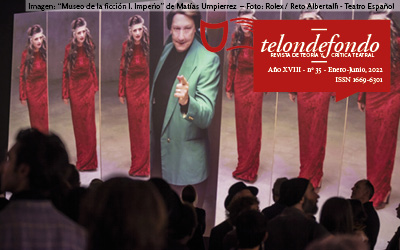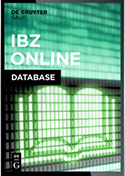Alfonsina Storni’s "Polixena y la cocinerita. Farsa pirotécnica" (1931). About the Staging, Rehearsal Criteria and Acting Training of a Research-Creation Performance in the University of Río Negro.
Abstract
The crossroads of art and science has recently acquired in Argentine universities forms of complementarity that have set up research-creation processes in which poíesis and its explanations and derived discourses build a knowledge of broader consensuses. This is the framework of the Project “Procedures applied to performance creation. Process and staging of a theatrical performance. The case of Alfonsina Storni’s Polixena y la cocinerita [Polyxena and the Little Cook]”. On the basis of a play that moves −from an intertextual perspective− through topics like classism, sexism and gender violence, the research and artistic creation Project aims to address the fact that sheer experience, sensations and emotions that theatrical devices trigger, in general, are not enough to account for the specificities of the scenic phenomenon, mainly if teaching technologies are intended to be shared academically and publicly. This experience follows the approaches of acting training related to the Suzuki method, Bogart’s “scenic viewpoints” and a selection of aesthetic theories that study the perceptual bonds between the scene and its recipients. Technical and poetic considerations on thoughtful theatrical knowledge are proposed as reference material but also as material for potential pedagogical projections in the higher education level.Downloads
Los autores/as que publiquen en esta revista aceptan las siguientes condiciones:
-
Los autores/as conservan los derechos de autor y ceden a la revista el derecho de la primera publicación, con el trabajo registrado con Licencia Creative Commons Atribución-NoComercial-CompartirIgual 4.0 Internacional, que permite a terceros utilizar lo publicado siempre que mencionen la autoría del trabajo y a la primera publicación en esta revista.
-
Los autores/as pueden realizar otros acuerdos contractuales independientes y adicionales para la distribución no exclusiva de la versión del artículo publicado en esta revista (p. ej., incluirlo en un repositorio institucional o publicarlo en un libro) siempre que indiquen claramente que el trabajo se publicó por primera vez en esta revista.
-
Se permite y recomienda a los autores/as a publicar su trabajo en Internet (por ejemplo en páginas institucionales o personales).











